TR Review: The Purge: Anarchy Is Fun, but Still Not Anarchic Enough
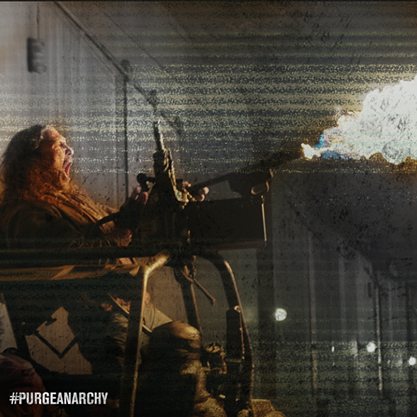 |
It’s funny – I remember when M. Night Shyamalan’s Signs came out, and before everyone started getting snarky about the whole water thing, the meme was that it was a unique take on an Independence Day-like event, to show it from the point of view of minor characters. This can be extremely effective: When the Wind Blows is one of the most disturbing cartoons ever made, and only ever shows two speaking characters in its portrayal of global tragedy (it seems like an astute way to do things; years later I learned it was because writer Raymond Briggs didn’t want to have to draw or write about more than two people)
Except nowadays, especially when it comes to movies from Blumhouse, this approach is no longer a novelty. Every other horror movie is like Signs perspective-wise, minus Shyamalan Twist (though Blumhouse’s one alien movie, Dark Skies, is notably the worst), so when The Purge described a world in which (almost) all crime is legal nationwide for one night, the savvy movie watcher knew going in that the movie would focus on just one family dealing with it. Once it did well, the question was whether the purse strings would be loosened enough to go outside in part 2.
They were. But I wish they’d be loosened even more.
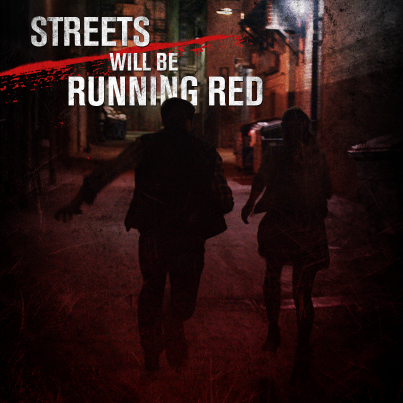 |
The Purge: Anarchy goes outside the house on Purge night, as a boring whitebread couple – Zach Gilford’s Shane and Kiele Sanchez’s Liz, married in real life – make the mistake of arguing about whether or not to split up during a car ride late in the afternoon, and then actually stopping at a store, all the better to have a gang of horror-masked youths preemptively sabotage their vehicle in anticipation of the lawlessness to come.
Meanwhile, struggling waitress Eva (Carmen Ejogo), barely affording her father’s medication, is left alone with her daughter Cali (Zoe Soul) when dad surreptitiously sneaks out to sell the murder rights to his own barely alive body to the highest-paying rich assholes. But that’s not their biggest problem: Eva’s landlord has decided to become a rapist for the evening – as one does – and a heavily armed force looking like a SWAT team is tearing down doors and blowing stuff up in their neighborhood.
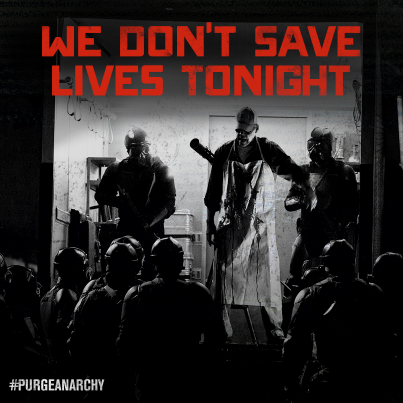 |
Both twosomes are arguably fortunate enough to be rescued by an unnamed man, later to be dubbed “Sergeant” (Frank Grillo, contracted to play Crossbones in marvel movies but acting here like he’s auditioning for the Punisher), who’s on a mission to avenge the death of his son…and while happy to off peripheral bad guys along the way, isn’t keen to see other innocents lose their lives.
The movie works best when it gets progressively more batshit towards the end: we enter what seems to be a safe and happy family home, only to see passive-aggressive remarks turn really sour when pills, booze and guns are added to the equation. Later we see how the 1% pass the time on Purge night, with closed-off hunting arenas and victims conveniently purchased from bounty hunters. There’s also a villain roaming the streets known only as Big Daddy (Jack Conley), a redneck-looking guy in a butcher smock with a chaingun and his own security battalion.
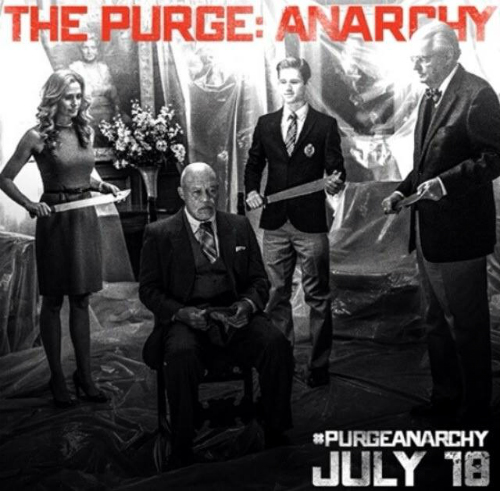 |
While the first Purge was more of a personal litmus test politically – righties felt it endorsed their view that big government is bad, while lefties seized on the prevalence of guns being bad – this sequel is an angry urban cry of resentment and rage (“urban” in this case not meaning simply “black,” by the way) against class stratification and wealth inequality. It also tears to shreds false notions of “empowering” the poor by taking from them, which you could conceivably take multiple ways – to me it’s overwhelmingly progressive in its message, but digs at the NSA and a few examples of good guys with guns defeating bad guys with guns offer a sop to more conservative viewers…perhaps (plus the notion that the only reason most people don’t do bad things is that there are rules against them is one often used by the religious right to decry atheism). Watching the movie feels not unlike listening to gangsta rap circa 1991, which was definitely not anti-gun, and not even anti-God, but considerably anxious to take down the system with words and weapons.
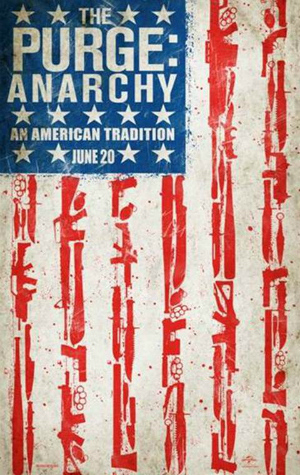 |
At the same time, there’s a frustration here that we’re still only seeing a smaller part of a larger world. The budget may allow exterior location shoots now, but it’s not yet providing elaborate sets. Ironically, the two live audience experiences based on The Purge did exactly that: last year’s Fear the Night took participants from a presidential press conference to a TV studio and a powerhouse penthouse, interacting with rebels and government forces. This year’s Breakout sticks you and a group of others in Big Daddy’s basement, forced to find the clues that will allow you to disable the various locks in the house before he comes home to kill. While it may have been a function of the audience immersion, both felt more atmospheric and expansive than either Purge film. We want to see these New Founding Fathers who brought in the Purge, want to know what they’re doing in Washington DC and the White House, and see how Big Daddy came to be who he is. It’d also be nice to explain how some of the legal technicalities work – for example, if someone steals your car on Purge night, is it illegal for you to take it back the next day?
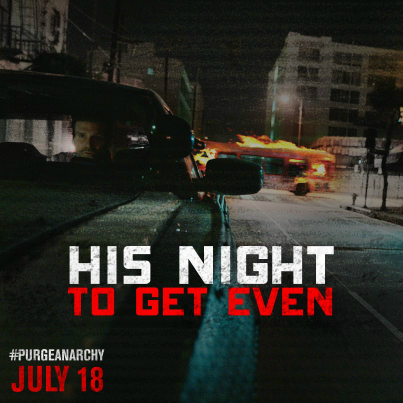 |
Grillo’s character is a big plus – the epitome of a flawed hero, he’s not a guy you can trust 100%, but unlike, say, Snake Plissken, he is slightly more likely to do the right thing than not. Shane and Liz ultimately get more interesting before things are through, with their marital disputes ringing as true as the mixture of joy and dread they feel in handling heavy arms for the first time. Downtown L.A. photographs very nicely in the hands of cinematographer Jacques Jouffret, but it also makes a local wish to see the parts of the city that are less empty at sundown. What’s happening on the Sunset Strip, for example? Koreatown? The beach? Well, that’s not the movie being made, which still wants to show the perspectives of the average folks. I get that, but the hints at the bigger picture make you wish at times for a different film than you’re seeing.
That said, I did like the movie overall – that it gets better as it goes along is a big help, and it finishes strongly, with the best character beats and far-out weird moments, mirroring, perhaps, the way some of us feel in the final moments of pulling an allnighter. The ultimate promise of the concept on film, however, has yet to be seen…and ironically, I think credited producer Michael Bay might be the no-holds-barred guy for that job.
